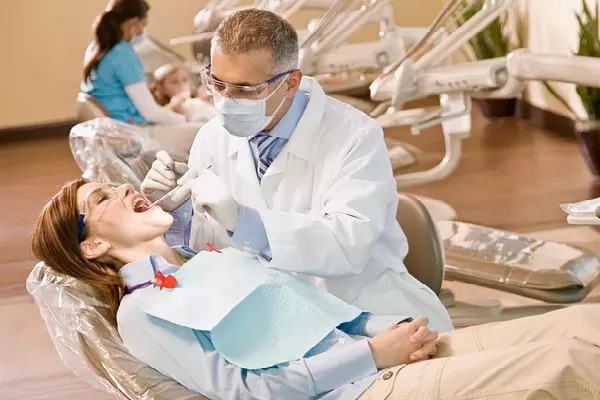Orthodontic treatment plays a significant role in achieving a healthy and aligned smile. Molar bands, a crucial component of orthodontic braces, can sometimes become loose due to various factors. If you find yourself wondering, “What to do if molar band is loose?” this article will guide you through the steps to manage this situation effectively while ensuring the success of your orthodontic journey.
Understanding Molar Bands in Orthodontic Treatment
Molar bands are metal rings that encircle the back molars as part of traditional braces. These bands serve as anchor points for the orthodontic wires and other components that facilitate the movement and alignment of teeth. Molar bands are cemented in place and are essential for achieving optimal orthodontic results.
Recognizing a Loose Molar Band
A loose molar band can be identified by the following signs:
Movement: If the molar band is moving or shifting, it’s likely loose.
Discomfort: You may experience discomfort or a sensation of the band being out of place.
Sensitivity: Increased sensitivity around the tooth and the surrounding area can indicate a loose molar band.
Steps to Take If Your Molar Band Is Loose
Assessment and Evaluation:
The first step is to gently assess the situation. Use a clean mirror to get a clear view of the molar band and its position. Do not attempt to force or manipulate the band on your own.
Contact Your Orthodontist:
If you suspect that your molar band is loose, it’s important to contact your orthodontist as soon as possible. Your orthodontist is the expert in managing orthodontic concerns and can provide guidance tailored to your specific situation.
Avoid Chewing Sticky or Hard Foods:
Until you can visit your orthodontist, avoid chewing sticky foods, hard candies, and foods that could potentially dislodge or further loosen the molar band.
Rinse with Warm Salt Water:
To alleviate any discomfort and maintain oral hygiene, rinse your mouth with warm salt water. This can help soothe the gums and prevent any irritation caused by the loose molar band.
Use Orthodontic Wax:
If the loose molar band is causing irritation or discomfort, you can use orthodontic wax to create a barrier between the band and your cheek or gums. This temporary solution can provide relief until you can visit your orthodontist.
Follow Orthodontist’s Recommendations:
Your orthodontist will provide specific instructions based on your situation. It’s crucial to follow their guidance to ensure the successful management of the loose molar band.
Potential Causes of Loose Molar Bands
Several factors can contribute to the loosening of molar bands:
Cement Failure: The adhesive cement used to secure the molar band to the tooth can sometimes weaken or fail, leading to a loose band.
Eating Hard or Sticky Foods: Biting into hard or sticky foods can put pressure on the molar band and potentially cause it to become loose.
Accidental Force: Accidentally bumping the molar band or exerting pressure on it can lead to its loosening.
Natural Tooth Movements: As teeth shift and move during orthodontic treatment, the molar band’s fit may change, resulting in it becoming loose.
Preventing Loose Molar Bands
While some instances of loose molar bands are unavoidable, there are steps you can take to minimize the risk:
Dietary Considerations: Avoid hard and sticky foods that could put excessive pressure on the molar bands.
Oral Hygiene: Maintain good oral hygiene to prevent any weakening of the adhesive cement that holds the molar band in place.
Orthodontist Visits: Attend regular appointments with your orthodontist. These visits allow them to monitor the condition of your braces and address any potential issues early on.
Follow Guidelines: Follow your orthodontist’s guidelines for caring for your braces, including how to brush and floss effectively.
Conclusion
A loose molar band is a common concern that can arise during orthodontic treatment. If you suspect that your molar band is loose, follow the steps mentioned above: assess the situation, contact your orthodontist, avoid certain foods, rinse with warm salt water, use orthodontic wax if needed, and follow your orthodontist’s recommendations. Addressing a loose molar band promptly ensures the success of your orthodontic treatment and helps maintain your overall oral health. Remember, your orthodontist is your trusted partner in managing orthodontic concerns, so don’t hesitate to seek their guidance and expertise. By taking proactive steps, you contribute to a smooth and successful orthodontic journey that leads to a confident and beautifully aligned smile.
Related Topics:
































